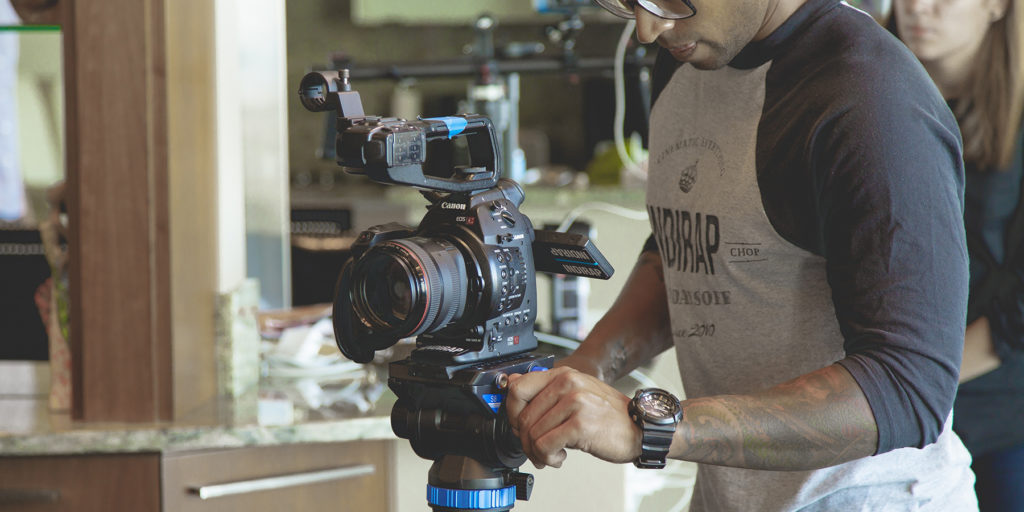Editorial professionals and multimedia professionals aren’t always the best playmates. Often, it’s because writers and editors think words are the most critical part of every project. We’re wrong.
Just ask Mo Willems, the editorial and artistic brains behind the award-winning, engaging-beyond-belief children’s books like Don’t Let the Pigeon Drive the Bus. There may be no genre where the balance between words and images is more critical. His massive success comes from the nuanced relationship between his copy and artwork.
“The images and the words are so codependent,” Willems told NPR’s On Point last year. “If I read a manuscript and the manuscript makes sense, there are too many words. And if I look at the images and the images make sense, then the images are too complex, too detailed, because the other half of that equation would not be necessary.”
The bottom line is, if you want to create great content, it’s not enough for writers and editors to just stay out of the way. Freelance writers need to be proactive about building that relationship, even for just a one-off project. Here’s how.
Include designers in the brainstorming process
A fundamental truth of design is that visual content must add value to a story in a way that words cannot.
Unfortunately, editors and marketers often arbitrarily assign stories as infographics, video, memes, and GIFs because those boxes need to be checked. That results in a lot of over-designed content, style guide snafus, and delays in execution. Then there’s the added cost of creating visuals for a story that doesn’t need them.
But working a designer into the brainstorming process prevents anyone from shoehorning multimedia into the editorial calendar. Instead, teams can concentrate on pinpointing the stories meant to be told visually, creating a more engaging and impactful content program.
“Including designers from the initial brainstorm or kickoff session and throughout the entire process usually yields a stronger, cohesive piece,” said graphic designer Cynthia Park, “because it results in a narrative that has been fully fleshed out from both the editorial and visual perspective.”
Set aside more time
Writers and editors know how long it takes to write something because they do it all day every day. But design? Video? I’ll admit that I have no idea how long it takes to design an amazing piece of multimedia content.
“Editorial expects full, finished projects within a day or two—projects that are twenty-plus hours of initial work,” said Allie Surdovel, a veteran graphic designer and illustrator. “It seems that there is often a longer period of time for writing initial pieces, then the design turnaround becomes urgent and is a wild rush at the end as an afterthought.”
Er…guilty as charged. Lucky for us writers, there’s an easy fix: Consult with a designer before you commit to a project deadline, be honest with your clients, and always, alwayspad your deadlines when there’s multimedia involved.
Learn the difference between a wireframe and a draft
Misunderstanding designers’ time requirements often leads to another, more specific issue: confusing wireframes with a full design draft. Designers hear the same feedback from clients during wireframe review: “I need to see a more detailed drawing to make a decision,” or “I want to see what both of these options look like fleshed out.”
For my fellow wordsmiths who may not know, wireframes are rough sketches of a design concept delivered for the purposes of validating how information is organized and laid out on the page. Think of it as an outline—a chance to redirect the designer without wasting too many work hours.
“During the wireframe or sketch phase, there is an expectation to create multiple options of what are basically finished products,” Surdovel said. Rising to meet that expectation can take a project way out of scope for your multimedia partner. But if you take it upon yourself to learn the lingo, you can be an advocate for design partners while also guiding your client through the production process with less friction.
Consider an art director
I currently work with a client who tried for a year to have me run their social graphics program, which was about half of the account output. It was a nightmare. I freely admit I have zero visual competency and next-to-no sense about how graphic design works. After what seemed like thousands of long, protracted, and confusing conversations, during which I fruitlessly tried to translate client needs into design lingo, and vice versa, I finally convinced them to have an art director take over that portion of the account. Now everyone is much happier.
The easiest way to get editorial and multimedia creators to play better together? Get a referee. We generally assume an editor will act as a go-between for clients and writers. Why don’t we do the same for multimedia more often?
When a client has regular multimedia needs, an art director is a far better resource than any English or journalism major could ever be. They can bring a technical eye to the ideation process, they actually know how long an asset should take to produce, and they know how to communicate with both editorial and designers.
Content is doing its job when it captures the viewer and engages attention. Sometimes that occurs through text; sometimes it’s design. The best content leverages both. Which means the sooner we writers can get onboard the multimedia train, the better our storytelling will be for it.
